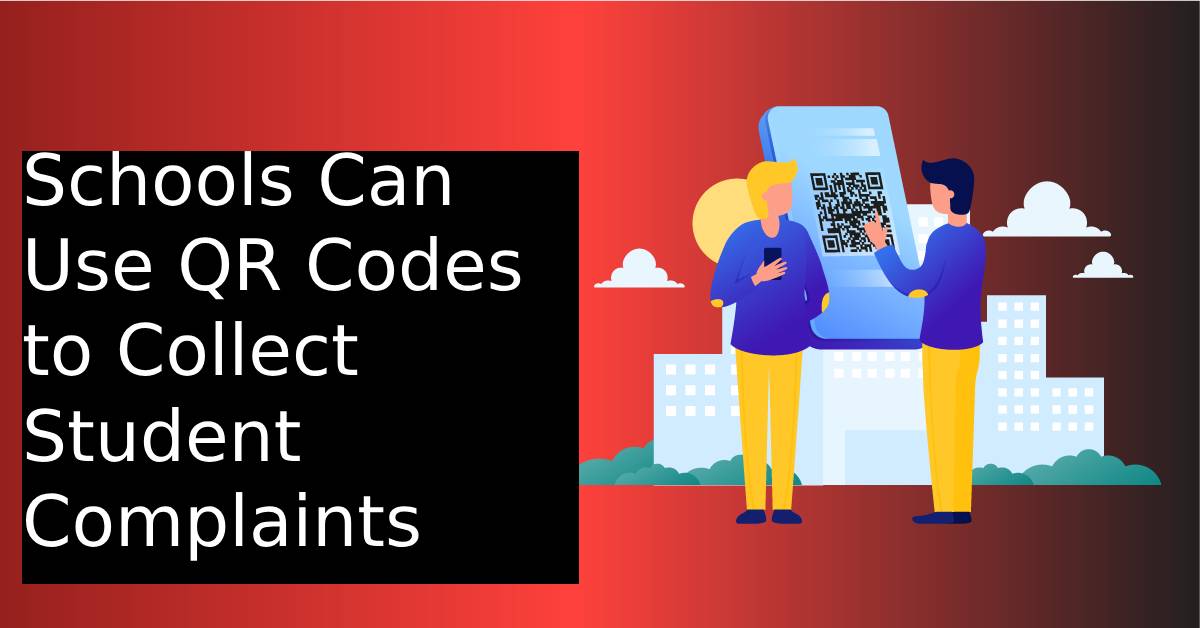Creating a safe and responsive environment for students requires more than policies—it requires practical systems that make it easy for students to be heard. One simple but powerful way to do this is by using QR codes to collect student complaints anonymously or with contact details.

In this guide, we’ll walk through how schools and academic institutions can implement a QR-code-based complaint system that works, step by step.
Why a Complaint System Matters in Schools
Students often have concerns or challenges they don’t feel comfortable sharing in person. Whether it’s about academics, teaching quality, welfare, peer interactions, or administrative issues, students should have a structured and accessible way to raise these concerns.
Traditional paper-based systems are often overlooked or hard to manage. A digital approach using QR codes is more efficient, private, and convenient—especially for students already accustomed to mobile technology.
How the QR Code Complaint System Works
Here’s a simple structure that schools can follow to set up a working system:
1. Create a Complaint Form
Use a form-building tool like Google Forms or Microsoft Forms to design an online complaint form. Make sure it’s short, clear, and easy to use on a mobile phone.
Suggested Form Fields:
- Student Full Name
- Program / Department
- Phone Number
- Email (optional)
- Nature of Complaint or Concern
- Preferred Time or Method of Contact (optional)
You can also allow the option to submit complaints anonymously by making name and contact fields optional.
2. Link the Form to a Dedicated Complaint Email
All form responses can be set to automatically trigger email notifications. Here’s how:
- For Google Forms, responses can be sent to a Google Sheet, and using add-ons like Form Notifications or Email Notifications for Forms, alerts can be sent to a specific email address (e.g., studentcomplaints@school.edu).
- For Microsoft Forms, connect the form to Power Automate to send real-time emails to your designated team.
This allows school authorities to respond promptly to issues raised.
3. Generate and Print the QR Code
Once your form is live:
- Copy the URL link to the form.
- Use a free QR code generator (like qr-code-generator.com or QRCode Monkey) to create a scannable QR code linked to the form.
- Download and test the code to ensure it works correctly on different devices.
Read also:
- Your Phone Knows You Better Than Market Research—And That’s a Game Changer for Marketers
- Best CDN Providers of 2025
- How to Add Rich Snippets to WordPress: A Complete Guide
- Best Guide on Semantic SEO (Tips + Tools + Examples)
- 10 Ways to Deal with WooCommerce Empty Cart Issues
- 15 Best Phone Tracker App Without Them Knowing
- Top 10 SEO Benefits Of Responsive Web Design
- How to Check a Website for Viruses: Recognizing and Getting Rid of Virus Infections
- Social Media Marketing Hacks for Nigerian Startups
4. Design a Poster for Placement in Classrooms and School Areas
Create a clear and student-friendly poster that includes:
- The QR code
- A short instruction: “Scan this code to submit a complaint or concern confidentially”
- A reminder that responses are reviewed and treated seriously
- The school’s logo or branding for authenticity
Posters should be placed in:
- Classrooms
- Common areas
- Hallways
- Administrative offices
Benefits of Using QR Codes for Complaints
This system offers multiple advantages for schools:
- Accessibility: Students can scan and submit complaints instantly from anywhere on campus.
- Privacy: Reduces the fear or discomfort of speaking in person.
- Real-time tracking: Complaints are sent directly to the responsible unit for action.
- Organised record keeping: All complaints are stored digitally, making it easier to monitor trends and follow up.
- Low-cost: No need for complex software or hardware—just a form, a code, and some posters.
Important Tips for Implementation
- Test the system with a few students before going live.
- Train a staff member to monitor the incoming complaints and respond accordingly.
- Set response timelines to manage expectations (e.g., “All complaints will be reviewed within 48 hours”).
- Review and improve the form periodically based on usage and feedback.
- Communicate the purpose clearly so students understand it’s a channel to help them, not a formality.
Final Thoughts
When students know they are being listened to, they feel more valued and respected. A QR-code-based complaint system is a small investment that can lead to big improvements in student satisfaction, trust, and overall school culture.
By taking a few simple steps—building a form, linking it to email, generating a QR code, and placing it in visible areas—schools can create a responsive, secure, and student-friendly way to address concerns.
It’s not just about collecting complaints; it’s about showing students that their voices matter.